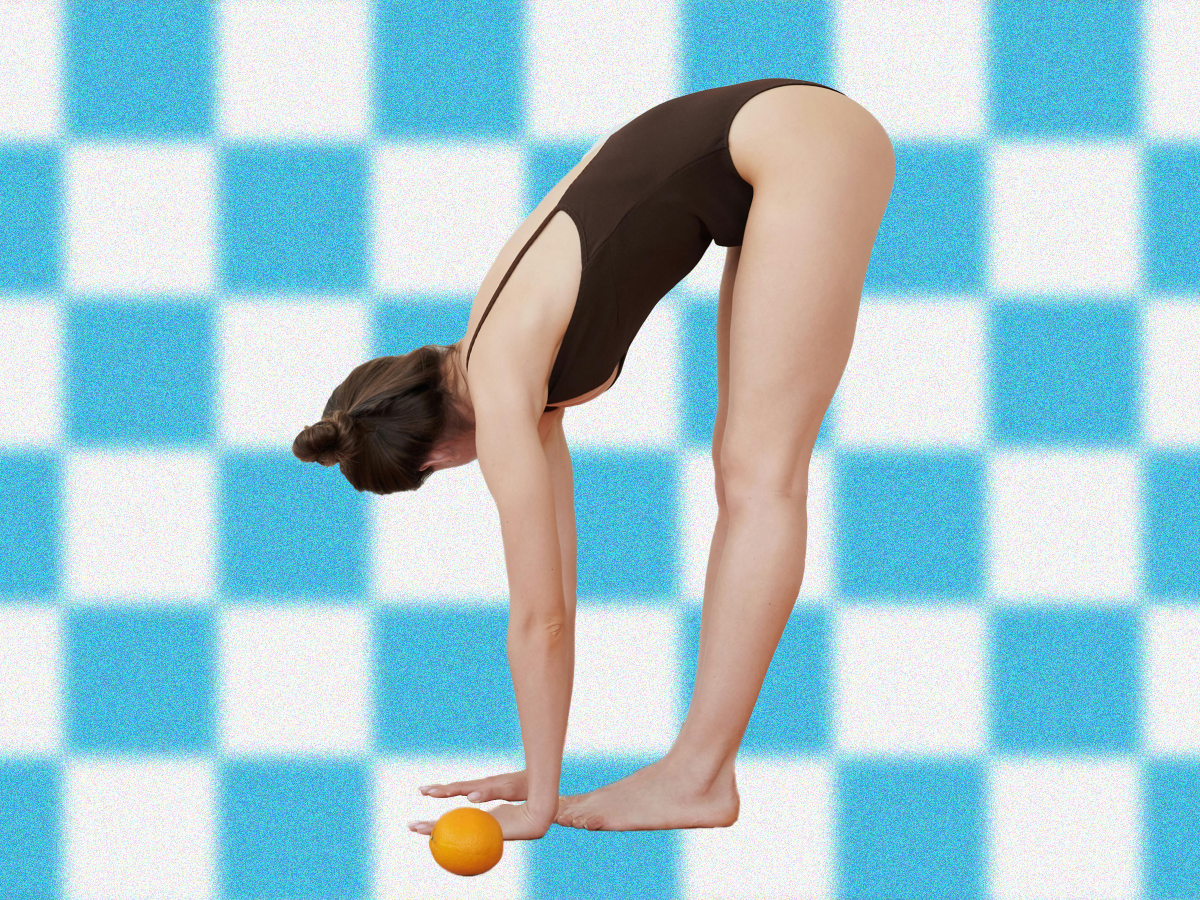
Amber Miller made headlines when she delivered a baby right after running the recent Chicago Marathon. As news spread, the 27-year-old was called “crazy,” even though she had gotten the okay from her doctor and walked the last 13 miles of the race.
Despite Miller’s critics, exercise during pregnancy is encouraged for soon-to-be mothers. The American Congress for Obstetricians and Gynecologists has a handy FAQ on its Web site about exercise during pregnancy. The most important thing to do while pregnant is to “listen carefully to your own body, and respect what it tells you,” says Sara Oliveri, a local personal trainer and well-being advisor for women.
Typically, a good rule of thumb for exercising while pregnant is this: “If you are an avid exerciser and something doesn’t feel right during your typical workout, back off, consult your doctor, and opt for a lower intensity pre-baby program,” Oliveri says. “On the other hand, if running, biking, and other fairly intense activities feel great to you and your bump, stick with it if your doc approves.”
Here are five exercises you can do during each trimester to strengthen certain muscles—particularly those in your upper and lower back—that will get a good workout once you’re carrying the extra weight. Oliveri recommends consulting with your doctor before taking on these exercise regimens during your pregnancy.
FIRST TRIMESTER
Exercise One: Superman and variations
Muscle Area: Lower and upper back muscles, core, and glutes
Reps: Three sets of ten to 15
Lie flat on your belly and lift arms and legs off the ground like you are flying. Hold position using muscles in upper and lower back and glutes. Try variations on this exercise such as “swimming” movements with arms and legs.
“As your belly gets bigger, your back will be forced to do more work on a daily basis, and exercises in this forward lying position will become impossible. It is best you increase the strength of your back before your belly starts to grow,” says Oliveri.
Exercise Two: Wide-leg deadlifts
Muscle Area: Total body (lower and upper back, legs)
Reps: Three sets of ten to 15
Take a wide stance with feet slightly wider than hip-width apart and toes facing straight forward. Grip a body bar or barbell with both hands and allow your arms to hang straight down to your thighs while holding it. Keep your chest lifted as you bend at your knees until the body bar/barbell reaches just below your knees or all the way to the floor. Once the bar has reached lowest point you can drop it while maintaining your posture, push down through your heels and slowly stand back up.
“Deadlifts are a total body exercise, and they force us to maintain excellent posture putting particular challenge on the lower back, upper back, and leg muscles,” says Oliveri. “Learning how to stabilize these muscles and control your posture early on in your pregnancy will make carrying your eight-month baby bump significantly less uncomfortable and easier on your spine.”
But, Oliveri says, if you don’t have experience with deadlifts, please ask a fitness professional to check your form on this exercise. Improper form can put too much strain on the lower back and accentuate poor posture.
Exercise Three: Squats
Muscle Area: Glutes, core, hamstrings
Reps: Three sets of ten to 15
Olveri recommends using placing a body bar on your shoulders or putting your fingertips behind your ears while keeping your elbows wide (like when doing crunches). Either of these positions will force you to keep your chest lifted and upper body parallel with the ground.
Begin bending at the knees and sinking your butt backwards as though you are about to sit down in a chair. Once you can’t go any lower, push though your heels and stand up slowly.
“Squats tone the glutes which will become harder to engage as your baby grows, based on the shift in how you carry your bodyweight during pregnancy,” Oliveri says. “Strong glute muscles will help take some of the burden off of the lower back. In addition, squats train our abs and back muscles to help us maintain perfect posture—very important once we are carrying about 20 extra pounds.”
Exercise Four: Crunches on a Bosu or fitness ball
Muscle Area: Core
Reps: Three sets of ten to 15
Lie back on a Bosu or exercise ball so that the top of your shoulders touches the ball when you are lying back completely. Exhale and pull your abdominal muscles toward your spine as you slowly rise to a seated position. Keep the abdominal muscles engaged as your slowly lower back down. Repeat.
“Women who begin their pregnancy with strong abdominal muscles report both easier deliveries, and greater success getting their flat tummy back post-pregnancy,” Oliveri says.
Exercise Five: Cardio (walking or running)
Reps: Aim for 25 to 45 minutes of moderate intensity (you should be able to carry on a conversation)
If you have not been running regularly before becoming pregnant, then walking is the better option, says Oliveri. However, if you are an avid runner or a high-impact exerciser, running should be perfectly safe until it becomes uncomfortable. If you love to run, the first trimester is the best time to do it.
“Aerobic activity during pregnancy often helps boost women’s energy levels as well as increasing cardiovascular and muscular stamina which helps women prepare for labor,” Oliveri says.
See Also:
SECOND TRIMESTER
Exercise One: Bent-over rows
Muscle Area: Back muscles
Reps: Three sets of ten to 15
Grip a barbell, body bar, or hand-held weights in both hands. Bend at your hips so that your chest is parallel with the ground. In a rowing motion, pull your hands while holding the weight(s) up to touch your belly button. As you do so, imagine pulling your shoulder blades coming together at the center of your back.
“Continued strengthening for the back muscles which will keep your posture strong, and support the weight of your growing belly instead of putting the pressure on your spine,” Oliveri says. “The stronger your back is, the more comfortably you will carry your new belly.”
Exercise Two: Standing crunch
Muscle Area: Core
Reps: Three sets of ten to 15
Place your fingertips behind your ears, elbows wide (just as you might during crunches). Stand tall and breathe in deeply. As you exhale, gently tuck your pelvis and chest inward while firmly pulling your bellybutton towards your spine. As you inhale lengthen out and stand tall again.
“This is an abdominal crunch variation that does not require you to lie on your back, and prevents your head from ever moving lower than your heart,” Oliveri says.
Exercise Three: Cat-cow pose
Muscle Area: Core and lower back
Reps: Three sets of ten to 15
Get down on all fours. Align your wrists directly under shoulders and knees directly under your hips. Those familiar with yoga will know this as the “table top” position. Breathe in deeply. As your exhale, pull your belly button in toward your spine, causing your back to round up into an angry cat position. As you inhale, release your belly button back toward to ground, allowing all of your abdominal muscles to relax and your lower back to arch slightly like a cow.
Exercise Four: Kegels
Muscle Area: Pelvic floor
Reps: Three sets of ten to 15
Sit in a chair or on an exercise ball with both feet flat on the floor. As you exhale, tighten the pelvic floor muscles. These are the muscles you use when you’re stopping the stream of urine. Hold the contraction as long as possible, then release. Oliveri recommends kegel weights, available online, which will enhance effectiveness of the exercise as well as enable you to measure your progress.
“Women who practice kegel exercises not only report easier deliveries, they also suffer from fewer bladder problems during and post-pregnancy,” Oliveri says. “Kegel exercises also help ensure that sex remains enjoyable for you and your partner post-baby.”
Exercise Five: Cardio burst (walking or running)
Reps: Aim for 25 to 45 minutes of moderate intensity (you should be able to carry on a conversation)
Oliveri has the same recommendations for women in the second trimester as she does during the first, but she says you should take it down a notch. You are carrying more weight now, and your joints are becoming more relaxed, so if running becomes uncomfortable, that’s your cue to stop. Using an elliptical machine, which minimizes impact, may also help during this stage.
THIRD TRIMESTER
Exercise One: Seated cable row
Muscle Area: Back
Reps: Three sets of ten to 15
Use either a cable machine at the gym or a simple resistance band at home during this exercise. If you’re are using resistance band, wrap it around a stable anchor such as a pole or the leg of a table. Sit on bench or chair at least two feet away from your anchor. Take one end of the resistance band or exercise cable in each hand. Sit up tall and stick out your chest. As you squeeze your shoulder blades together behind you, pull your hands toward your chest.
Exercise Two: Leg curls and extensions
Muscle Area: Back muscles, hamstrings, and quads
Reps: Three sets of ten to 15
Use a leg curl machine at the gym or your own body weight at home. Start seated. To perform the curl, start with your legs extended straight out in front of you. Bend your knees and squeeze your legs backward until your heels touch the underside of your seat, hold for a moment, then slowly lengthen your legs back out.
To perform the extension, start with your legs bent at a 90-degree angle. Engage the muscles in your legs to extend straight out until there is no bend in your knees. Hold for a moment, and slowly lower back down to the 90-degree position.
“At this stage in your pregnancy, other leg exercises may be difficult either because they will place undue stress on your lower back or because your belly will get in the way,” Oliveri says.
Exercise Three: Bicep curls
Muscle Area: Biceps
Reps: Three sets of ten to 15
From a standing or seated position, hold one hand-held weight in each hand. Allow palms to face forward, arms hanging straight down beside you. Slowly engage your bicep muscles to curl the weights toward your shoulders, then slowly lower them back down.
“Not only is this a safe and fool-proof exercise excellent for late in your pregnancy, but you’re also going to need all the bicep strength you can get once your baby is born and you’re carrying him/her around in your arms instead of your belly,” Oliveri says.
Exercise Four: Lateral shoulder raise
Muscle Area: Shoulders
Reps: Three sets of ten to 15
From standing or seated position, hold one dumbbell weight in each hand. Allow your arms to hang straight down beside you, and your palms to face toward your body. Without bending your elbows, slowly engage the tops of your shoulders to raise your arms straight up to shoulder height. Slowly lower arms back down.
“Strong shoulders will help you carry baby and pick up all the baby gear you’ll be toting for the next few months with ease.,” Oliveri says.
Exercise Five: Cardio burst (swim)
Reps: Aim for 25 to 45 minutes of moderate intensity
“Swimming is the ideal cardiovascular exercise for late in your pregnancy because it enables you to move freely without being burdened by the extra weight you are carrying,” Oliveri says. “Swimming is no-impact activity, so your joints, which are susceptible to injury due to the excess relaxin in your system, will be kept completely safe.“


















